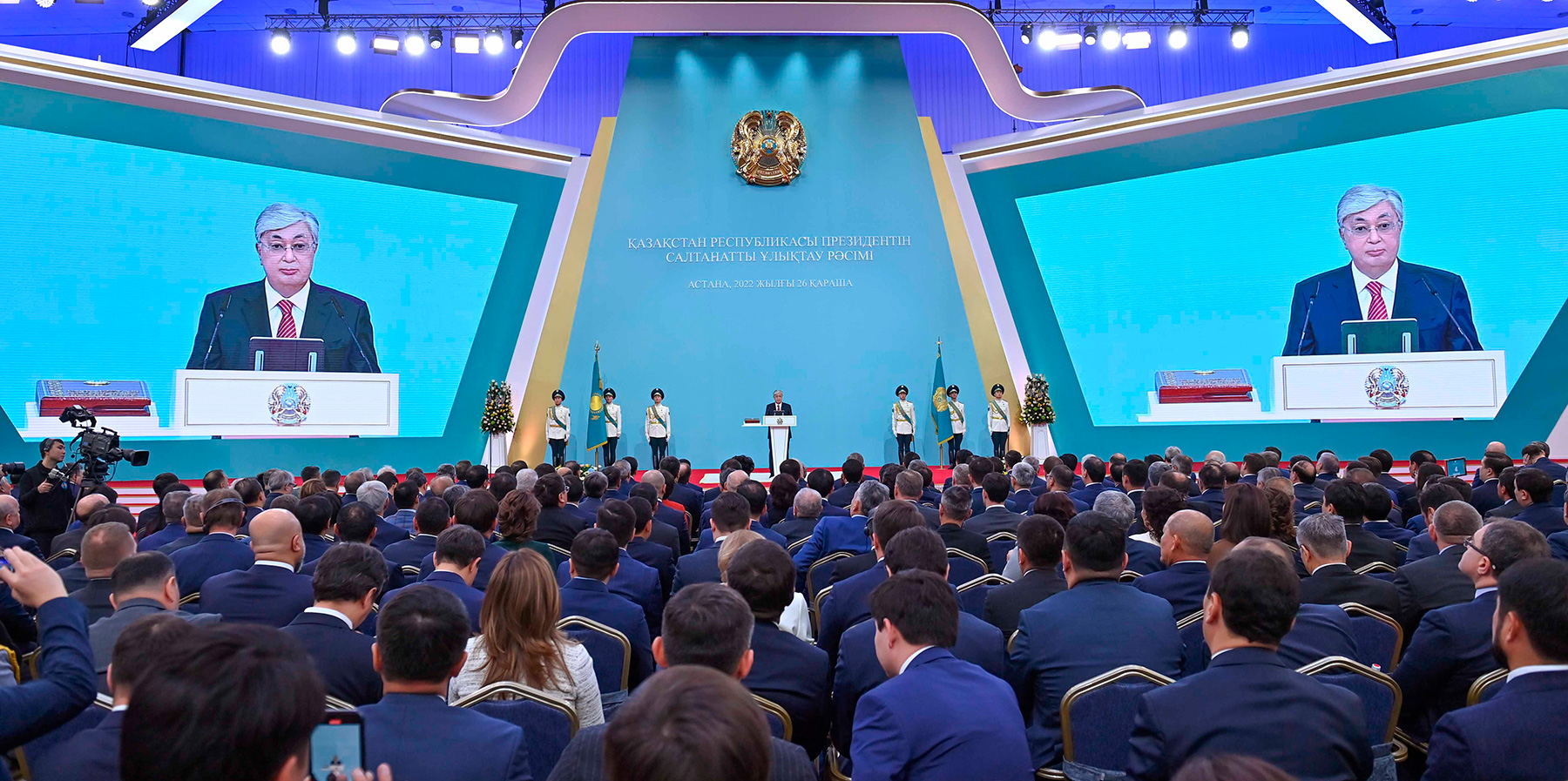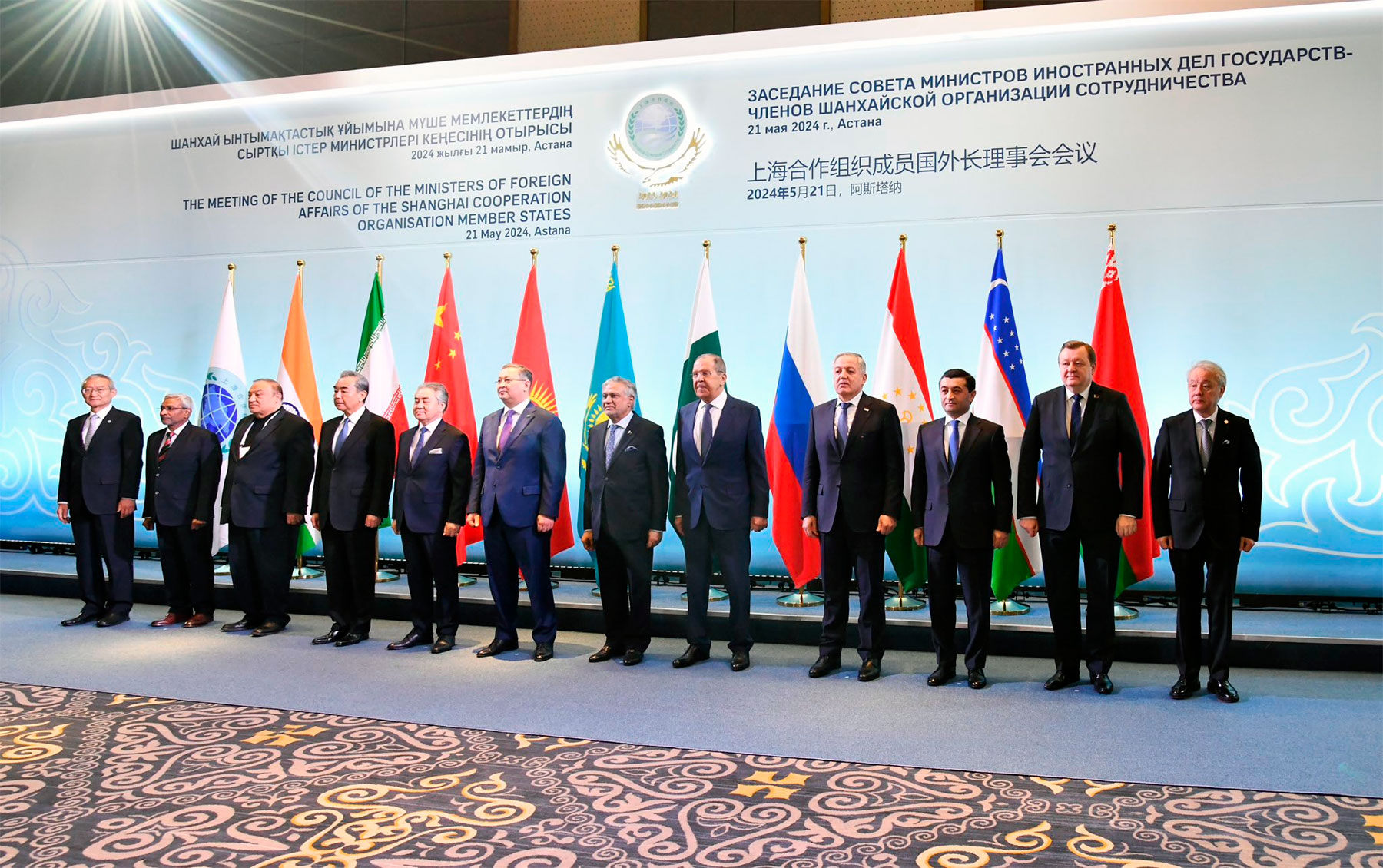Following the collapse of the Soviet Union in 1991, Kazakhstan has strived to build a brighter future. As a new country, Kazakhstan became a founding member of the Commonwealth of Independent States in 1992, as well as the Collective Security Treaty (later the Collective Security Treaty Organization) in 1992, and the Eurasian Custom Union (later Eurasian Economic Union) in 1995. Kazakhstan aimed to increase its economic prospects and trade opportunities with its neighbors, as per the 1997 presidential address of Nursultan Nazarbayev. The “Development Strategy of Kazakhstan 2030” relayed the country’s first-ever long-term goals, and represented Kazakhstan’s intentions of becoming an industrialized country.
While Russia continues to be one of Kazakhstan’s greatest partners, China’s fast growing economy has started to bring the two countries closer together, forming an important new partnership that both states are eager to explore and develop. Being at the crossroad of the legendary Silk Road, Kazakhstan represents a terrestrial trade route alongside Russia, where Chinese goods are able to enter to the European market. Kazakhstan recognized its potential role in global trade, and in turn, implemented a special program called the “Path to Europe”. From this moment on, Kazakhstan became more involved in international organizations and initiatives, such as the Shanghai Cooperation Organization and the Belt and Road Initiative.
President Kassym-Jomart Tokayev has been cautiously and masterfully handling relations with all partners, so as to maintain good relations, while also protecting Kazakhstan’s interests. Politically, Kazakhstan is deeply tied to Russia, which has been explicitly shown in January 2022, when it requested the intervention of CSTO and Russian peacekeepers to face an attempted rebel takeover. The same can be said on other politically relevant positions, such as collaborating on the creation of an integrated digital information system for EAEU member states. Economically, Russia is Kazakhstan’s second biggest partner, as number one and number three are respectively China and Italy.
Kazakhstan’s way forward is certainly not obvious; instead, it is tied to future events and competing geopolitical interests. The current Ukrainian conflict, for example, is the main reason for the split between Russia and the rest of Europe. Kazakhstan’s third greatest partner, Italy—who is historically more moderate and friendly to Russia—proved that such relations are no longer enough to balance out other interests. On the other hand, such a presence may help ease European pressure. At the same time, the brewing rivalry between China and the United States may have repercussions on China/EU competition, especially after the failure of the Comprehensive Agreement of Investment and many European States decided to abandon the Belt and Road Initiative. With this in mind, Kazakhstan must never forget the reason for its success thus far: it is a resource- rich country that acts as a bridge between continents, connecting Europe, Russia and China, and in some ways—the world.
Following the collapse of the Soviet Union in 1991, Kazakhstan has strived to build a brighter future. As a new country, Kazakhstan became a founding member of the Commonwealth of Independent States in 1992, as well as the Collective Security Treaty (later the Collective Security Treaty Organization) in 1992, and the Eurasian Custom Union (later Eurasian Economic Union) in 1995. Kazakhstan aimed to increase its economic prospects and trade opportunities with its neighbors, as per the 1997 presidential address of Nursultan Nazarbayev. The “Development Strategy of Kazakhstan 2030” relayed the country’s first-ever long-term goals, and represented Kazakhstan’s intentions of becoming an industrialized country.
While Russia continues to be one of Kazakhstan’s greatest partners, China’s fast growing economy has started to bring the two countries closer together, forming an important new partnership that both states are eager to explore and develop. In the early 2000s, China began importing oil and gas, as well as invested in several economic and construction projects within the country. Since 2005, China has spent over 19 billion dollars on over twenty different projects and another 11 billion in construction and infrastructure. In other words, a total of over 30 billion has been invested in less than twenty years. Other than simple bilateral trade and foreign direct investment, China has started to involve Kazakhstan on an initiative that enables it to grow beyond the regional level. Being at the crossroad of the legendary Silk Road, Kazakhstan represents a terrestrial trade route alongside Russia, where Chinese goods are able to enter to the European market. Kazakhstan recognized its potential role in global trade, and in turn, implemented a special program called the “Path to Europe”. From this moment on, Kazakhstan became more involved in international organizations and initiatives, such as the Shanghai Cooperation Organization and the Belt and Road Initiative.
In addition, Kazakhstan also started to take matters into its own hands, setting up new goals in what is known as its “Strategy 2050”, pursuing new initiatives within energy policies and foreign relations. The strategy envisions two stages: first, it aims to create a strong manufacturing industry as soon as 2030. Second, it focuses on promoting engineering services as its basis for a knowledge-based economy, that may later expand into high-end products. To achieve this, Kazakhstan set out to completely reform its investment system to be more compatible with Western financial standards. Then, it leveraged its massive energy resources to attract investors and partners. As of today, the national fund Samruk- Kazyna manages coal, uranium, oil and gas extractions alongside foreign companies, giving to each a piece of the pie on the basis of their future plans and investments within the country. For example, Chinese influence has gained the China Petroleum Engineering and Construction Company a 67% share in PetroKazakhstan and an 8,4% share in North Caspian Operating Company. Russia presence is felt with RUSAL and LukOil, while the United States is present in Tenghizchevroil through Chevron and ExxonMobil. Other companies such as ENI, Shell and Total are also operating within Kazakhstan either through shares or in direct collaboration with KazMunayGaz (a subsidiary company of Samruk-Kazyna).
The presence of other foreign oil companies that represent their own countries characterizes Kazakhstan’s attempt to manifest itself as a potential partner even to the West. Kazakhstan has signed an Enhanced Partnership and Cooperation Agreement with the European Union in 2015 , and it is eligible to receive financial and technical assistance through the European Instrument for Democracy and Human Rights, the Instrument contributing to Stability and Peace, the Nuclear Safety Instrument, and the Partnership Instrument and the ERASMUS + Program. Furthermore, Kazakhstan has ratified the Paris Agreement, whose goals for the creation of green industries are in line with the European Green Deal and its own future projects of renewable energy production, as declared in the 2018 Presidential Address. This, along with energy and mineral resources, is extremely interesting for European Countries, both collectively and individually. The relations between these states and Kazakhstan have been strengthening in the last few years, with official visits such as France’s President Emmanuel Macron trip in November 2023, and other representatives of European companies.
However, President Kassym-Jomart Tokayev has been cautiously and masterfully handling relations with all partners, so as to maintain good relations, while also protecting Kazakhstan’s interests. Politically, Kazakhstan is deeply tied to Russia, which has been explicitly shown in January 2022, when it requested the intervention of CSTO and Russian peacekeepers to face an attempted rebel takeover. The same can be said on other politically relevant positions, such as collaborating on the creation of an integrated digital information system for EAEU member states. Economically, Russia is Kazakhstan’s second biggest partner, as number one and number three are respectively China and Italy. President Tokayev makes a point to maintain close contact with all of them, as he met Xi Jinping in October 2023, Giorgia Meloni in January 2024, and Vladimir Putin in February 2024.
https://russiancouncil.ru
Being in the middle of many—sometimes opposing—interests can often lead to instability. Foreign influence in Kazakhstan divides the population, especially as the nation becomes richer and more dependent on foreign trade. Along with money also comes pressure for further alignment. In fact, while the EU declared it respects Kazakhstan’s decision not to take sides in the current conflict in Ukraine, it
anticipates to “work jointly with Kazakhstan in order to prevent the use of its territory as a platform for the circumvention of EU sanctions imposed on Russia”. These kinds of expectations can clearly sway political and economic favors in one or the other direction, meaning that Kazakhstan will have to pay close attention to the concessions it makes and their intrinsic meaning.
Thus, Kazakhstan’s way forward is certainly not obvious; instead, it is tied to future events and competing geopolitical interests. The current Ukrainian conflict, for example, is the main reason for the split between Russia and the rest of Europe. Kazakhstan’s third greatest partner, Italy—who is historically more moderate and friendly to Russia—proved that such relations are no longer enough to balance out other interests. On the other hand, such a presence may help ease European pressure. At the same time, the brewing rivalry between China and the United States may have repercussions on China/EU competition, especially after the failure of the
Comprehensive Agreement of Investment and many European States decided to abandon the Belt and Road Initiative. With this in mind, Kazakhstan must never forget the reason for its success thus far: it is a resource- rich country that acts as a bridge between continents, connecting Europe, Russia and China, and in some ways—the world.






